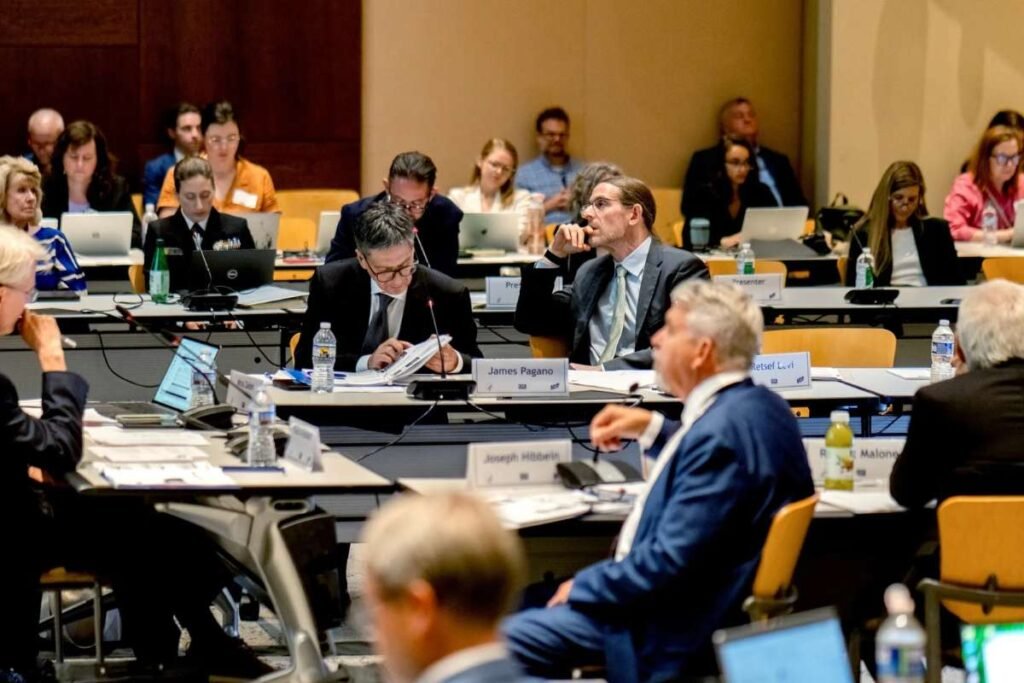The Centers for Disease Control and Prevention’s CDC Vaccine Advisory on Immunization Practices (ACIP) has undergone a major restructuring with the addition of five new members, expanding its ranks to 12 just before a key meeting in Atlanta this week.
The restructured committee is preparing to issue recommendations on COVID-19 booster eligibility for the fall season and on universal hepatitis B vaccination for newborns, decisions that will shape vaccine demand forecasts, insurance coverage, and procurement strategies across the healthcare industry.
Broader Implications for Vaccine Market and Coverage
CDC Vaccine Advisory recommendations play a pivotal role in the U.S. vaccine ecosystem. They determine which vaccines are covered by private insurers, which are distributed free of charge through the federal Vaccines for Children (VFC) program, and what hospitals and clinics are expected to stock.
As a result, pharmaceutical companies including Pfizer, Moderna, Sanofi, and GSK closely track ACIP decisions, which can influence quarterly demand projections and contract negotiations with health systems. Guidance on the COVID-19 booster, in particular, will provide signals on how many doses should be manufactured, shipped, and allocated for the upcoming respiratory virus season.
Hospitals and regional health networks also rely on ACIP’s policy direction to plan procurement cycles, secure cold storage capacity, and allocate staff for immunization campaigns. A shift in newborn hepatitis B vaccination policy, for example, would require adjustments in obstetric and neonatal care protocols nationwide.
Operational Decisions in Focus
This week’s agenda highlights the committee’s operational influence. On COVID-19, ACIP is expected to define priority groups for the fall booster rollout, weighing factors such as age, prior immunity, and comorbidities. These recommendations will guide vaccine ordering at the state and provider level, affecting how quickly doses reach pharmacies, primary care clinics, and large hospital systems.
The committee will also evaluate whether to recommend universal hepatitis B vaccination for infants at birth. Adoption of such guidance would standardize care across delivery centers, but also require hospitals to reassess inventory planning and ensure consistent vaccine availability in maternity wards.
For healthcare providers, insurers, and distributors, these decisions translate into immediate logistical planning, from updating electronic health record prompts to recalibrating insurance billing codes and claims processing systems.
State-Level Shifts Create New Business Dynamics
While ACIP guidance traditionally sets the national standard, some states have begun forming regional vaccine policy alliances to supplement or refine federal recommendations. Washington, California, Oregon, and Hawaii have signaled intentions to align on joint vaccine frameworks, citing the need for additional flexibility in adapting to evolving public health priorities.
For the healthcare industry, this divergence creates both challenges and opportunities. Pharmaceutical distributors and insurers may need to navigate dual standards, tailoring supply chains and coverage policies to meet varying state and federal guidelines. Regional health systems, in turn, could gain leverage in shaping vaccine rollout strategies that reflect local demand and population health needs.
CDC Vaccine Advisory Industry Preparing for Guidance
With the restructured ACIP now in place, stakeholders across the vaccine supply chain are preparing for potential adjustments. Manufacturers are monitoring demand signals for production planning, insurers are reviewing benefit structures to align with forthcoming coverage mandates, and hospitals are reassessing staffing and cold chain logistics ahead of the fall respiratory virus season.
The CDC Vaccine Advisory committee’s decisions this week will not only influence immediate immunization efforts but also set the tone for how the U.S. balances national and regional vaccine policy — a critical factor for the healthcare industry, insurers, and pharmaceutical markets heading into 2026.
Also Read :- CDC Vaccine Panel Overhaul Sparks Backlash, State Pushback, and Federal Scrutiny









